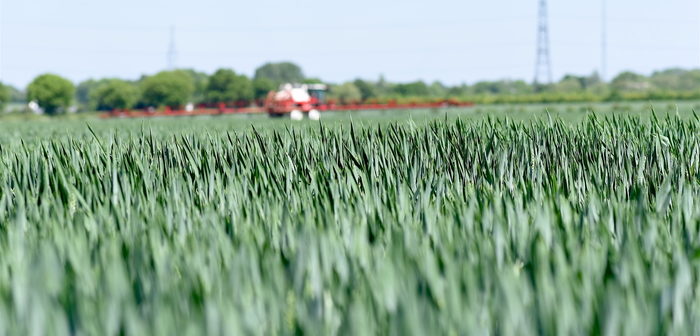Univoq, the new cereal fungicide from Corteva Agriscience, has shown it delivers an average yield benefit of 0.25t/ha over Revystar® XE.
Across 36 sites in England and Scotland, Univoq outperformed the previous market standard in more than 80% of trials.
The uplift in yield from using Univoq is calculated to be worth £50/hectare to growers.
Mike Ashworth, Cereal Fungicide category manager for Corteva, said: “2021 was a high disease pressure year, and we know that Univoq’s major strength is septoria control, so it gave the fungicide the chance to really show what it is capable of.
“We have seen this excellent yield response from Univoq for many years, so this is not a surprise, but the data presented from last year’s harvest shows a clear advantage which can be directly linked to a greater return on a grower’s investment.”
The trials work compared Univoq applied at 1.25l/ha to Revystar XE at 1l/ha – rates which are comparable in terms of the cost to a grower.
Higher yields
In six of the 36 trials, Revystar XE delivered a higher yield than Univoq, but at all other sites, Univoq came out on top. In two cases, Univoq out-yielded Revystar XE by more than 1t/ha. Overall, the mean difference between the two products was 0.25t/ha.
Mr Ashworth said: “Growers want reliable, robust chemistry which controls key diseases in order to maintain green leaf area, allowing the crop to fulfil its yield potential. When the disease came in 2021, Univoq delivered.
“A 0.25t/ha yield advantage is worth £50/ha to a grower when the wheat price is at £200/tonne – a clear justification for using Univoq over other chemistry.”
Univoq was launched last year. Targeted at the T2 fungicide timing, it delivers a powerful combination of curative and persistent protection against septoria plus a broad spectrum of other diseases, including rusts.
Containing the InatreqTM active molecule and the patented i-Q4 formulation, Univoq has a unique site of action, meaning there is no cross resistance to any other chemistry used on farms today.
A standard application at the T2 timing is 1.25l/ha, but rates can be adjusted up to 1.5l/ha or down to 1.1l/ha depending on variety and disease prevalence.




